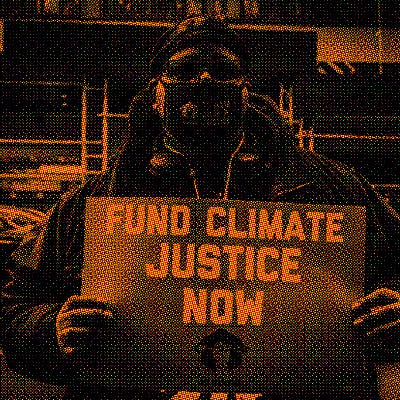“Even if you examine all of those other pieces ... you will still find that race is a big factor.”

Photo by Erik McGregor/LightRocket via Getty Images
Biden’s “race-neutral” approach to environmental justice is a mistake
Early in Joe Biden’s campaign to become the Democratic Party’s nominee for president, he was floundering. Despite being the overwhelming favorite going into the race, he was a distant third and in danger of dropping out before finally turning things around. What fueled his comeback? Rallying support of Black voters, and speaking about the climate crisis. By the time Biden locked up the nomination, he had a plan to spend trillions of dollars addressing climate change. Crucially, that plan emphasized environmental justice and investing in communities of color that have long been most adversely affected by environmental hazards.
But while he has managed to say the right things since taking office — and even implement some groundwork for actual improvements — it appears that Biden’s worst instincts have gotten the best of him once again. Earlier this week, The New York Times reported that the White House Council of Environmental Quality will not take race into account when pursuing policies of environmental justice.
“We are trying to set up a framework and a tool that will survive, and one that still connects to what the on-the-ground impacts are that people are experiencing,” Brenda Mallory, chairwoman of the council, told the Times. “I feel that we can do that based on race-neutral criteria.”
This decision to go full “colorblind” and attempt to ignore race is a common fault of well-meaning but often clueless Democratic politicians, who insist that not seeing race means treating everyone as equal. That might be fine if all things were equal, but they aren’t. Communities of color have worse health outcomes in part because they have been forcibly exposed to more environmental hazards — through everything from racist redlining practices and housing laws that cornered them into neighborhoods closer to pollution to a lack of generational wealth that makes escaping such conditions significantly more challenging. The issue is systemic, and seemingly small injustices can lead to massively harmful outcomes.
The Biden administration is trying to figure out how to address those concerns and lessen the undue burden that communities of color experience when it comes to environmental damages. But it is trying to do so while ignoring the fact that these are majority-minority areas that are carrying the burden. Instead, per the Times, the White House plans to look at factors like income, unemployment rates, air pollution, and proximity to pollution sites, among other categories. The goal is ostensibly the same — to improve the quality of life in communities of color — but Biden’s route requires more steps to get there. That means there’s a real risk that Biden’s environmental justice plan might not actually bring environmental justice.
“The administration is mistaken in thinking that race-neutral environmental policy is an effective solution.”
“It is not the first time I've heard that,” Bineshi Albert, the co-executive director of the Climate Justice Alliance, told Mic when asked about Biden’s “colorblind” policy approach. “But it is very concerning that I'm hearing it a little more frequently right now.”
Albert says that she’s increasingly heard members of Congress take up this rhetoric as well — a concerning trend for the people who live in communities that are most affected by environmental hazards. “Even if you examine all of those other pieces around income, and health impacts, and location in relation to facilities where people live next to, you will still find that race is a big factor in how that happens,” Albert explains.
One explanation for the administration’s attempt to leave race out of the equation is that the White House wants to avoid any legal challenges. With a conservative Supreme Court and lots of Trump-appointed judges in the lower courts, Biden risks any policy that gets challenged getting struck down. It already happened when his administration attempted to extend debt relief to minority farmers but was blocked by a Florida judge.
But those involved in environmental justice don’t buy that explanation. “I couldn’t give you a rationale of why I think they’re doing that,” Albert says. “I can make some assumptions that it’s easier to turn a blind eye to what’s happening than to actually address that it is happening, and that it should be addressed by the federal government.” She also notes that by ignoring race, it could give the Biden administration a plausible excuse for shirking its commitments to Native groups. “It can also be seen as a move to eliminate responsibility to tribal communities,” Albert says.
Whether the Biden administration’s attempt to ignore race is pragmatic or not, it doesn’t really matter to the communities that need the most help. “The administration is mistaken in thinking that race-neutral environmental policy is an effective solution,” says Rev. Lennox Yearwood, President and CEO of Hip Hop Caucus. “Your race, regardless of income, is a determining factor in how polluted your community is. To address environmental racism and create real equity, we must make policies that incorporate race along with the other important dimensions the administration has identified.”
One thing is clear: Ignoring race won’t help anyone — at least not the people Biden is supposedly hoping to help. “Who does that exception benefit? That exception doesn’t benefit communities and people,” Albert says. “It benefits the things that are causing harm in the environment.”